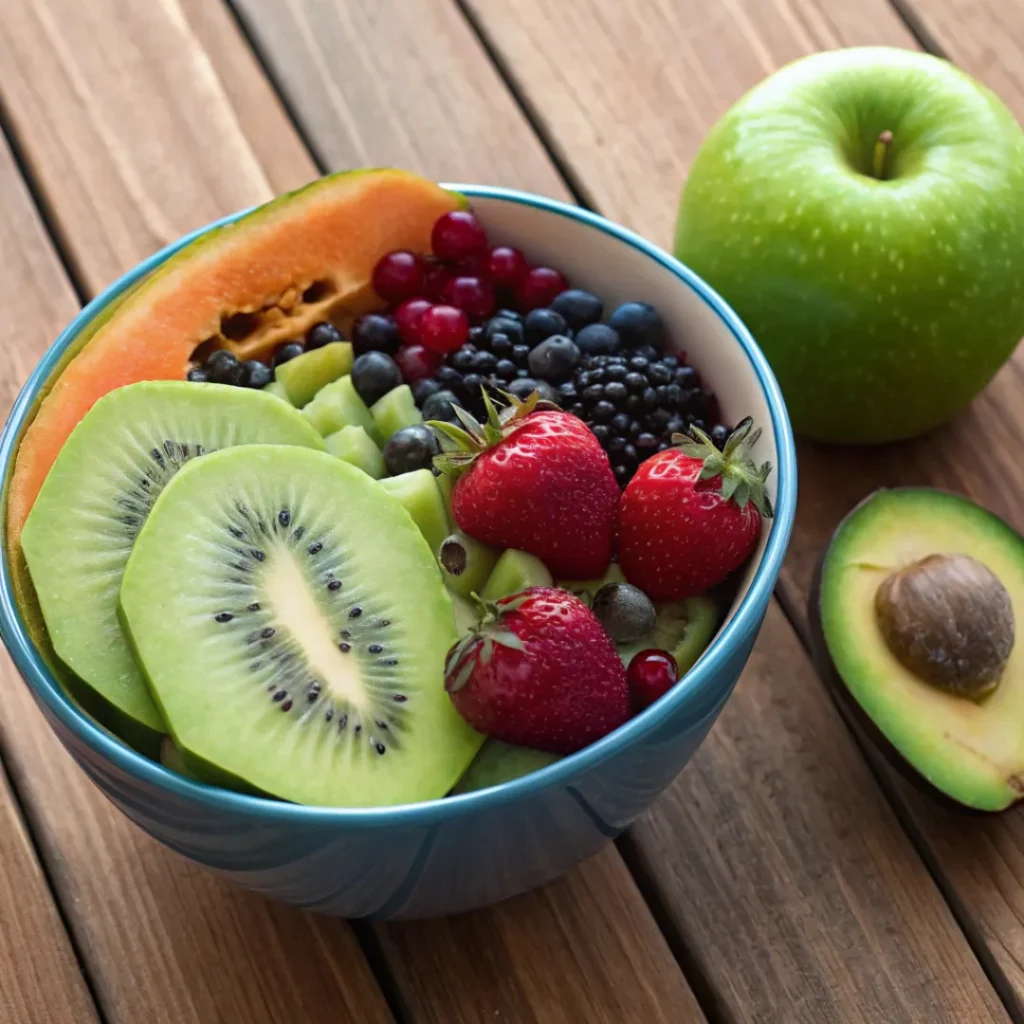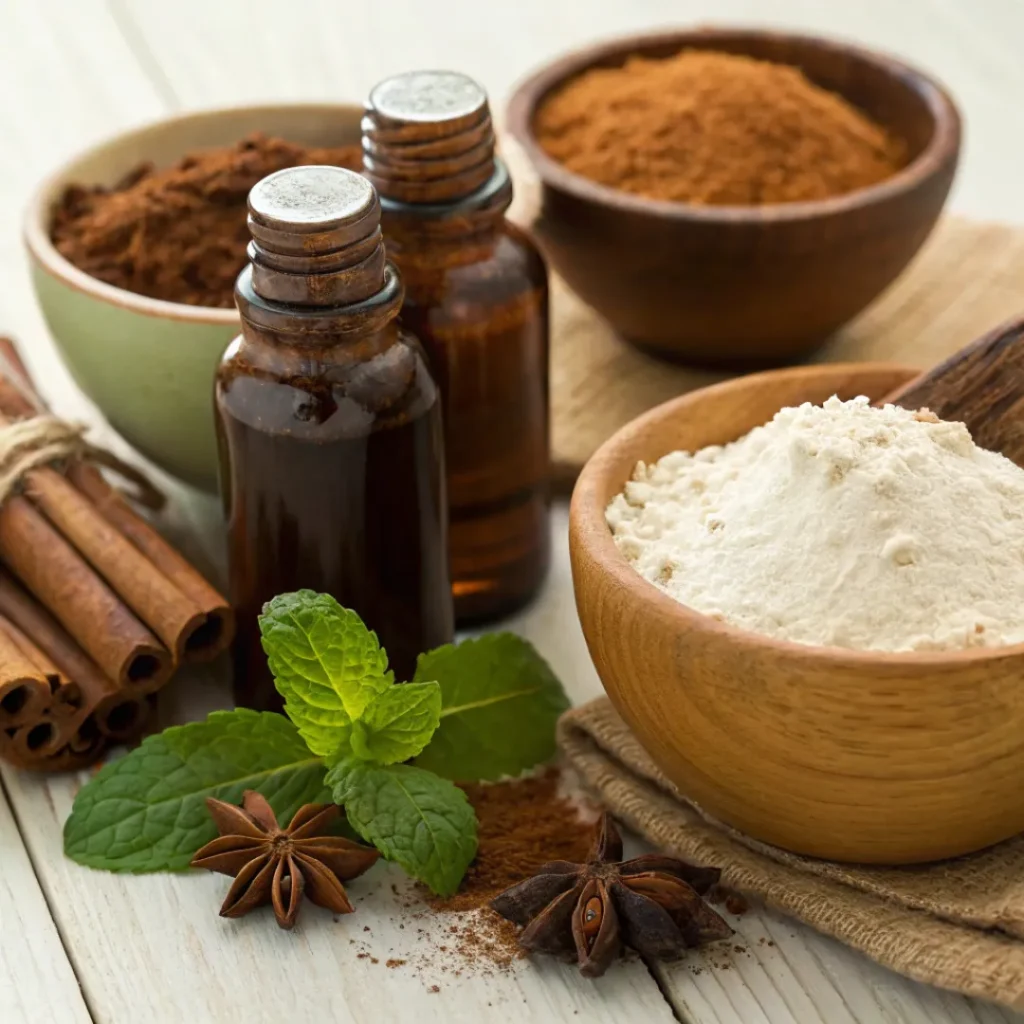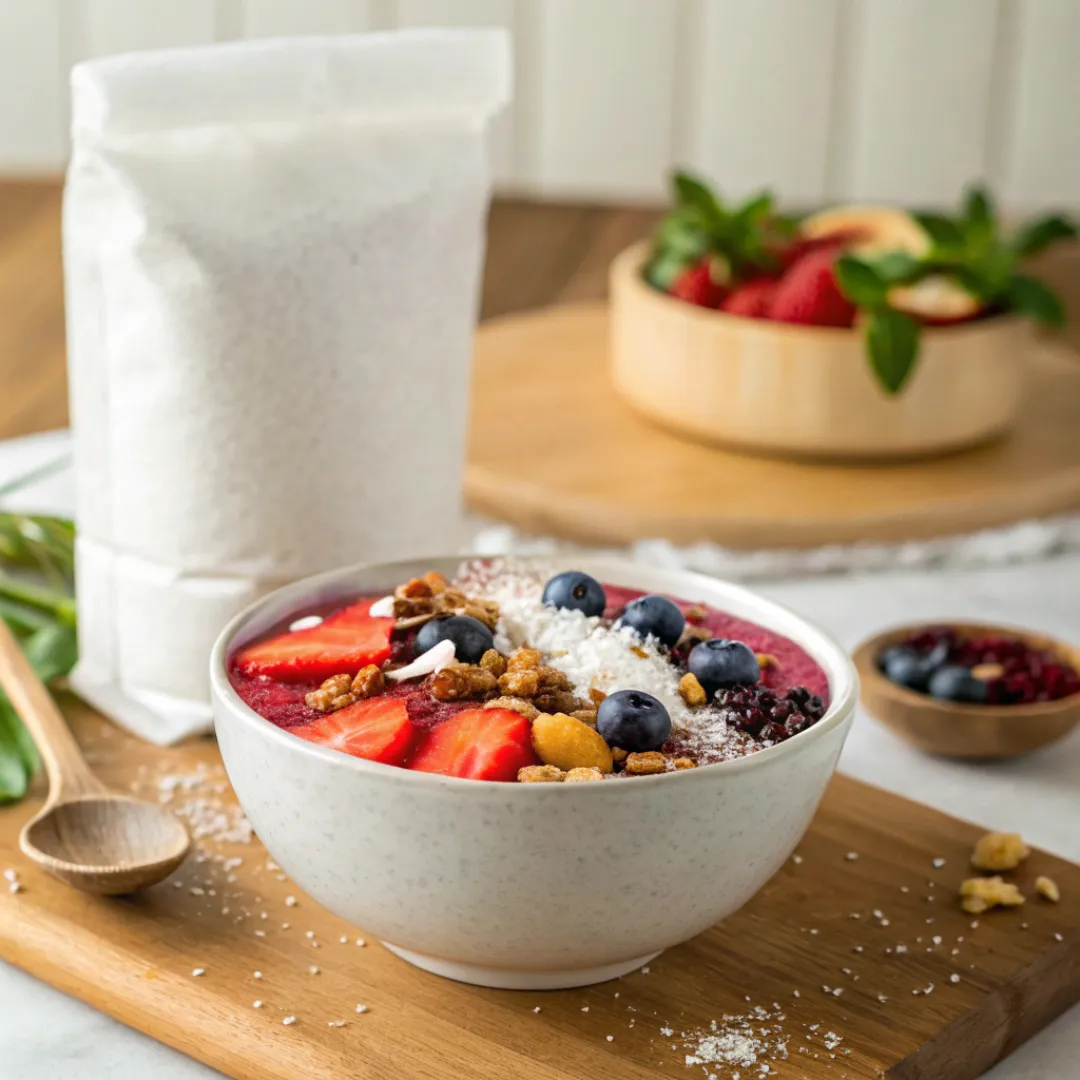Smoothie bowls are a popular choice for breakfast, post-workout meals, or as a refreshing snack. Known for their vibrant colors, creamy textures, and array of toppings, smoothie bowls are both visually appealing and packed with nutrients. However, with a base made primarily of fruits, smoothie bowls can contain a significant amount of natural sugar. This raises the question: Do smoothie bowls have a lot of sugar, and are they a healthy choice?
In this article, we’ll explore the types of sugars in smoothie bowls, discuss how ingredients affect their sugar content, and share tips for reducing sugar in homemade smoothie bowls. By the end, you’ll know how to make a balanced, nutritious smoothie bowl that tastes great without being overly sugary.
Types of Sugar in Smoothie Bowls
Smoothie bowls contain different types of sugars, including:

Natural Sugars
Found in fruits and some vegetables, these include fructose and glucose, which provide a natural source of energy.
Added Sugars
Ingredients like honey, maple syrup, agave, or sweetened yogurt add extra sugar, often used to enhance flavor.
Refined Sugars
Some commercial or store-bought smoothie bowls may contain refined sugars if they use processed fruit juices or sweetened products.
The sugar content in a smoothie bowl depends on the proportion of these different sugar types, making it important to understand which ingredients contribute to total sugar.
Common Ingredients that Affect Sugar Content
Several ingredients commonly used in smoothie bowls can influence their sugar levels. Here are some of the main contributors:
High-Sugar Fruits
Fruits like bananas, mangoes, pineapples, and grapes are naturally higher in sugar.
Fruit Juices
Blending fruits with fruit juices instead of water or milk increases the sugar content.
Sweetened Yogurt
Yogurts with added sugar can raise the sugar level in the base.
Additional Sweeteners
Honey, agave syrup, or maple syrup add extra sugar to smoothie bowls.
Toppings
Ingredients like dried fruits, sweetened granola, or chocolate chips can increase the sugar content significantly.
Balancing these ingredients helps control the overall sugar level while still creating a delicious smoothie bowl.
Are Natural Sugars in Fruits Harmful?
Natural sugars in fruits, primarily fructose, are generally healthier than refined sugars due to the additional fiber, vitamins, minerals, and antioxidants that whole fruits provide. These nutrients work together to slow digestion, helping to prevent the rapid blood sugar spikes often associated with refined sugars. Fiber, for example, not only slows sugar absorption but also aids in digestion and helps you feel fuller for longer.
However, it’s still possible to consume too much sugar, even from natural sources. Blending fruits into smoothies or acai bowls can make it easy to consume a large amount of sugar in one sitting, sometimes more than you’d expect from whole fruit. To balance your intake, try combining high-sugar fruits (like bananas, mangoes, and grapes) with lower-sugar options (such as berries), leafy greens, and protein-rich ingredients like yogurt, nuts, or seeds. This approach helps create a more balanced meal that’s lower in sugar, high in nutrients, and longer-lasting in energy.
In moderation, the natural sugars in fruits are a healthy choice, but mindful portioning and combining with other ingredients can make your bowl even more nutritious.
How to Estimate the Sugar Content of a Smoothie Bowl
To estimate the sugar content in your smoothie bowl:
- Calculate Fruit Sugar: For example, a medium banana has about 14 grams of sugar, while a cup of mango has around 23 grams.
- Consider Sweetened Ingredients: Check if your yogurt, milk, or any toppings contain added sugar.
- Add Up Sweeteners: If you add honey or maple syrup, account for roughly 17 grams of sugar per tablespoon.
- Use a Nutrition App: Nutrition-tracking apps allow you to input ingredients and estimate total sugars.
This approach can help you stay mindful of sugar levels, especially if you’re looking to reduce sugar intake.
Health Impacts of High-Sugar Smoothie Bowls
Consuming high-sugar foods, even if naturally occurring, can have some health impacts if not balanced with other nutrients. Here are a few considerations:
Energy Spikes and Crashes
High-sugar bowls can lead to a quick energy spike followed by a rapid drop, leading to fatigue.
Impact on Blood Sugar Levels
Large amounts of sugar may cause a blood sugar spike, which can be a concern for those managing blood sugar.
Caloric Surplus
Sugar contains calories, and high-sugar smoothie bowls can add more calories than expected, impacting weight management goals.
While smoothie bowls can be healthy, it’s helpful to aim for a balance of macronutrients protein, fats, and fiber—to keep energy steady and support overall health.
Tips for Making Low-Sugar Smoothie Bowls
Creating a low-sugar smoothie bowl is simple with a few strategic changes:
Use Low-Sugar Fruits
Opt for berries, kiwi, or avocado, which are lower in sugar.
Add Veggies
Vegetables like spinach, kale, or zucchini are low in sugar and blend well with fruits.
Limit Sweeteners
Skip honey or maple syrup and rely on the natural sweetness of fruits.
Choose Unsweetened Yogurt and Milk
Use unsweetened versions of almond milk, coconut milk, or Greek yogurt.
Be Mindful with Toppings
Choose toppings like seeds, nuts, or fresh fruits over dried fruits or sugary granola.
By following these tips, you can enjoy a smoothie bowl that’s flavorful, satisfying, and lower in sugar.
For more ideas on creating delicious low-sugar smoothie bowls, check out this guide from FitOn.
Choosing Low-Sugar Fruits for Your Smoothie Bowl
Using low-sugar fruits is an excellent way to keep the bowl sweet without adding too much sugar. Here are some options:

Berries
(Strawberries, Blueberries, Raspberries): High in fiber and antioxidants with low sugar.
Kiwi
Offers a sweet flavor with a low sugar content.
Avocado
Adds creaminess and healthy fats with minimal sugar.
Papaya
Provides a mild, sweet taste without too much sugar.
Green Apple
Slightly tart with lower sugar compared to other apples.
Experimenting with these fruits allows you to enjoy sweetness while keeping sugar levels in check.
Alternative Sweeteners and Flavor Boosters
If you want to add sweetness without extra sugar, consider these natural flavor enhancers:

Vanilla Extract
A dash of vanilla can enhance sweetness without adding sugar.
Cinnamon or Nutmeg
Spices add warmth and depth of flavor.
Unsweetened Cocoa Powder
Adds a chocolatey flavor and richness without sugar.
Coconut Flakes
Adds a naturally sweet, tropical flavor.
Mint Leaves
Fresh mint can enhance flavors and add a cooling effect.
These flavor enhancers can be mixed in or sprinkled on top to add taste without extra sugar.
Are Store-Bought Smoothie Bowls High in Sugar?
Many store-bought smoothie bowls can be high in sugar because they often contain sweetened yogurts, fruit juices, and added sugars. Always check the ingredient list and nutrition label if buying premade smoothie bowls. Look for options that use unsweetened ingredients, or consider making your own smoothie bowl at home, where you can control what goes into it.
Sample Low-Sugar Smoothie Bowl Recipe
Here’s a quick recipe to make a low-sugar smoothie bowl at home:
Ingredients
- 1/2 cup frozen mixed berries
- 1/4 avocado
- 1/4 cup unsweetened almond milk
- 1 tablespoon chia seeds
- Toppings: Fresh berries, coconut flakes, and a few chopped nuts
Instructions
- Blend the frozen berries, avocado, chia seeds, and almond milk until smooth.
- Pour the mixture into a bowl.
- Add toppings like fresh berries, coconut flakes, and nuts for a low-sugar, satisfying smoothie bowl.
This recipe provides natural sweetness and a creamy texture without excess sugar.
Frequently Asked Questions
Can I still enjoy smoothie bowls while watching my sugar intake?
Absolutely! Choose low-sugar fruits, avoid added sugars, and use natural flavor enhancers to reduce sugar.
Are smoothie bowls suitable for a diabetic diet?
With low-sugar ingredients and controlled portions, smoothie bowls can be part of a balanced diet for those managing blood sugar. Consult with a dietitian for guidance.
What are the best low-sugar toppings?
Opt for fresh fruits, seeds, nuts, and spices instead of dried fruits or sweetened granola.
Is there a way to sweeten smoothie bowls without adding sugar?
Yes, try vanilla extract, spices like cinnamon, or unsweetened cocoa powder for natural flavor without sugar.
Conclusion
Smoothie bowls can be a nutritious and delicious part of your diet, but it’s essential to be mindful of sugar content. By choosing low-sugar fruits, avoiding added sweeteners, and incorporating ingredients like veggies, protein, and healthy fats, you can create a smoothie bowl that’s balanced, satisfying, and refreshing. Enjoy the natural sweetness of fruits in moderation, and experiment with flavors and textures to make your smoothie bowl both tasty and health-conscious.

